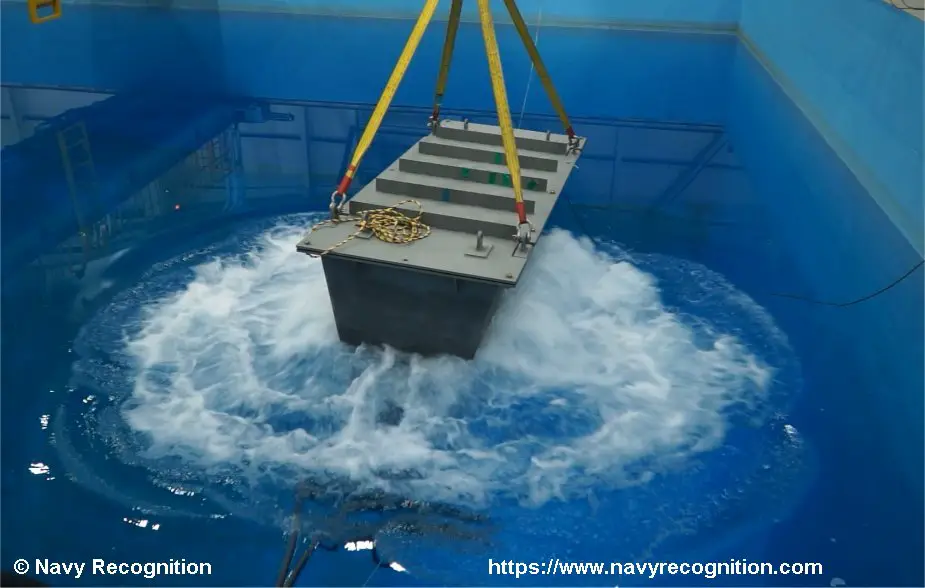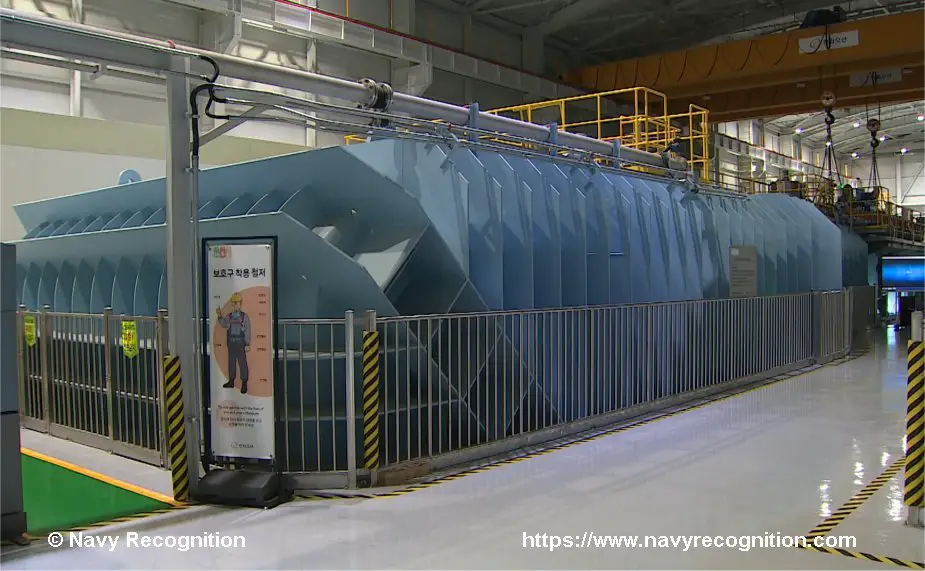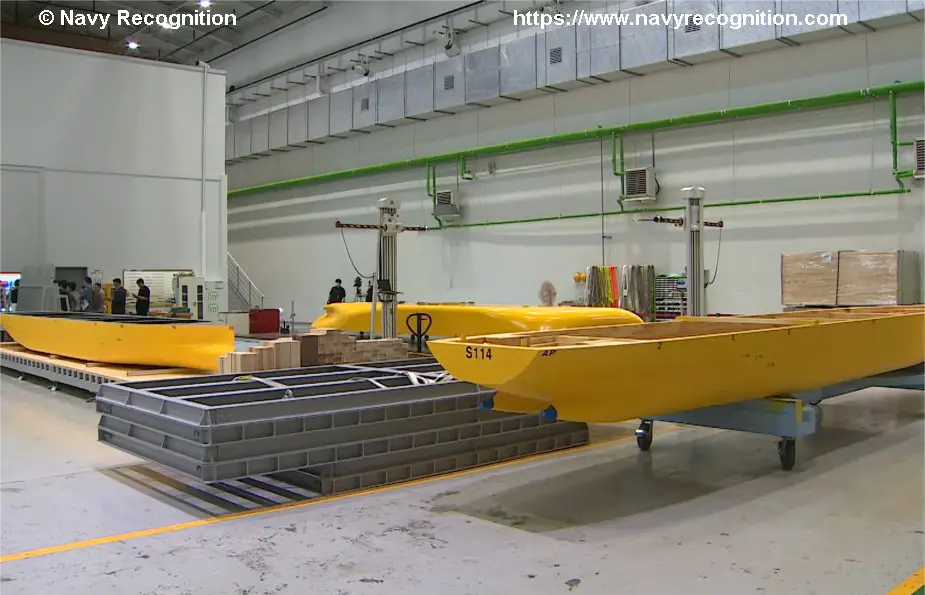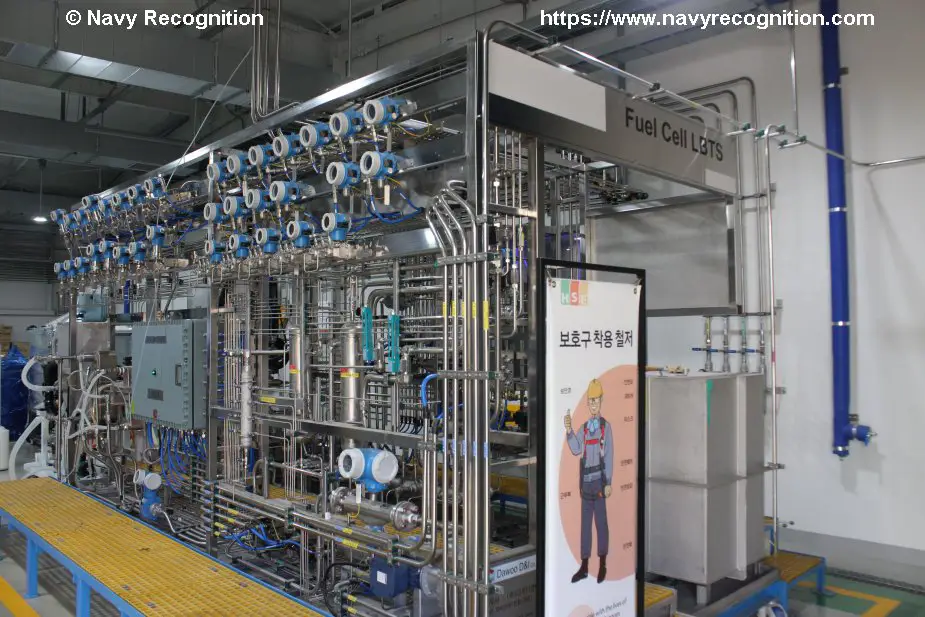Army Recognition Group had the unique opportunity to visit Hanwha Ocean's R&D campus in Siheung, South Korea. This has a special role in the Jang Bogo III Batch II submarines that Hanwha Ocean is building for the ROK Navy.
Follow Navy Recognition on Google News at this link
 Acoustic Water Tank of Hanwha Ocean. (Picture source: Navy Recognition)
Acoustic Water Tank of Hanwha Ocean. (Picture source: Navy Recognition)
At the forefront of naval technology in Siheung stands the Hanwha Ocean R&D campus. As one steps inside, the first thing that captures attention is the cavitation tunnel. Cavitation, a phenomenon resulting from varied pressures, becomes evident when a propeller rotates at specific speeds. As the propeller spins, the water pressure drops, leading to bubble formation.
These bubbles, in turn, produce underwater noises. Any ship that Hanwha Ocean intends to sell undergoes rigorous testing in this tunnel to ensure it meets client specifications. The facility plays a pivotal role in reducing the detrimental effects of cavitation, such as heightened underwater noise that risks warships' detection and potential physical damage to the propeller.
Architecturally, the cavitation tunnel is an underground rectangular structure. Within it, an internal propeller generates a robust water flow that circulates clockwise. When a ship is placed inside, its propeller creates a secondary flow, resulting in two distinct water currents. Notably, this tunnel stands as the largest of its kind for commercial applications.
 Cavitation tunnel of the R&D Campus of Siheung. (Picture source: Navy Recognition)
Cavitation tunnel of the R&D Campus of Siheung. (Picture source: Navy Recognition)
Adjacent to the tunnel is the model fabrication area, often referred to as the model workshop. Given the enormity of some ships, Hanwha Ocean crafts scaled-down wooden replicas. These models are intricately designed, with wood pieces stacked and subsequently carved to mirror the ship's structure. Alongside, aluminum is used to craft the propeller assembly.
 Model fabrication area of the R&D Campus of Siheung. (Picture source: Navy Recognition)
Model fabrication area of the R&D Campus of Siheung. (Picture source: Navy Recognition)
The journey continues into the propeller fabrication room, where machines on both sides are dedicated to propeller creation. Here, blue pillars move in unison, horizontally shaping the wooden structures into precise ship models. Once the carving is completed, the models are coated and illuminated with varying lights, such as orange and red. Any imperfections observed lead to further refinements.
Another intriguing facility is the towing tank, catering to a variety of ships ranging from warships to commercial vessels. Special emphasis is given to crafting miniatures, which, when submerged, emulate a genuine oceanic environment.
The Land-Based Test Site (LBTS) stands out for its commitment to eco-friendliness and electrification. It's here that the lithium-ion batteries for the Jang Bogo III submarine are tested. Designed to optimize space within the ship, these batteries are accompanied by staircases on either side for crew mobility. The utilization of these lithium-ion batteries offers a quieter operation, reducing the chances of underwater detection. Moreover, their dual configuration ensures operational stability, with one battery functioning while the other stores energy. Such a system, in tandem with diesel, allows submarines to remain submerged for extended periods.
 Fuel Cell LBTS of Hanwha Ocean. (Picture source: Navy Recognition)
Fuel Cell LBTS of Hanwha Ocean. (Picture source: Navy Recognition)
The acoustic water tank facility offers insights into a ship model's acoustic traits. Equipped with sensors and sound-emitting devices, the facility analyzes various acoustic attributes like reflection, diffraction, and refraction. Especially for battle ships with their elongated structures, the acoustic assessment becomes intricate.
Concluding the tour is the autonomous ship remote control center. Harnessing vast data from ships at sea, the center utilizes deep learning and sensor fusion to gauge potential collision risks. The results drive the calculation of alternative sea routes. With capabilities to remotely control ship engines and rudders, Hanwha Ocean is inching closer to realizing fully autonomous, unmanned warships.



